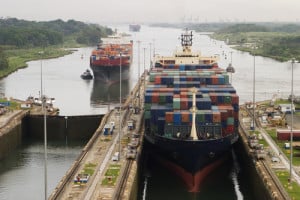
At any given time, thousands of ships are plying the world’s oceans. Tracking them in real-time, like with aircraft, has always been a challenge. Until now.
Just when you thought it was safe to go back in the water…
At any given moment, there are approximately 70,000 ships and boats now somewhere out among the world’s five oceans, all part of a vibrant commercial fishing industry. And it’s now possible to monitor every single one of them, in real-time.
Julie Cohen, a researcher with the University of California at Santa Barbara, recently published details about this immense big data project. “Using satellite tracking, machine learning and common ship-tracking technology, scientists from UC Santa Barbara teamed up with colleagues at Global Fishing Watch, National Geographic Society’s Pristine Sea project, Dalhousie University, SkyTruth, Google and Stanford University to illuminate the extent of global fishing—down to single vessel movements and hourly activity.”
See also: Could blockchain be the future of your supply chain?
In fact, Cohen adds, “70,000 vessels of the global fishing fleet traveled 460 million kilometers in 2016, equivalent to traveling to the moon and back 600 times.”
Real-time monitoring of commercial fishing is taking on other forms as well. For example, NOAA Fisheries had announced is moving it’s North Pacific Observer Program away from placing human observers on fishing boats to relying on electronic monitoring data collection, employing cameras and associated sensors to passively record and monitor fishing activities, Dorene Lorenz of KSRM Alaska reports.
The UC-Santa Barbara team is employing machine learning to analyze 22 billion messages publicly broadcasted from vessels’ AIS positions.
So, what’s the point of assembling all this real-time data? For starters, the researchers can establish patterns across nations and cultures. In addition, measures can be taken to address overfishing of certain regions of the sea. Now, researchers can spot the patterns at any time and location around the globe.



























